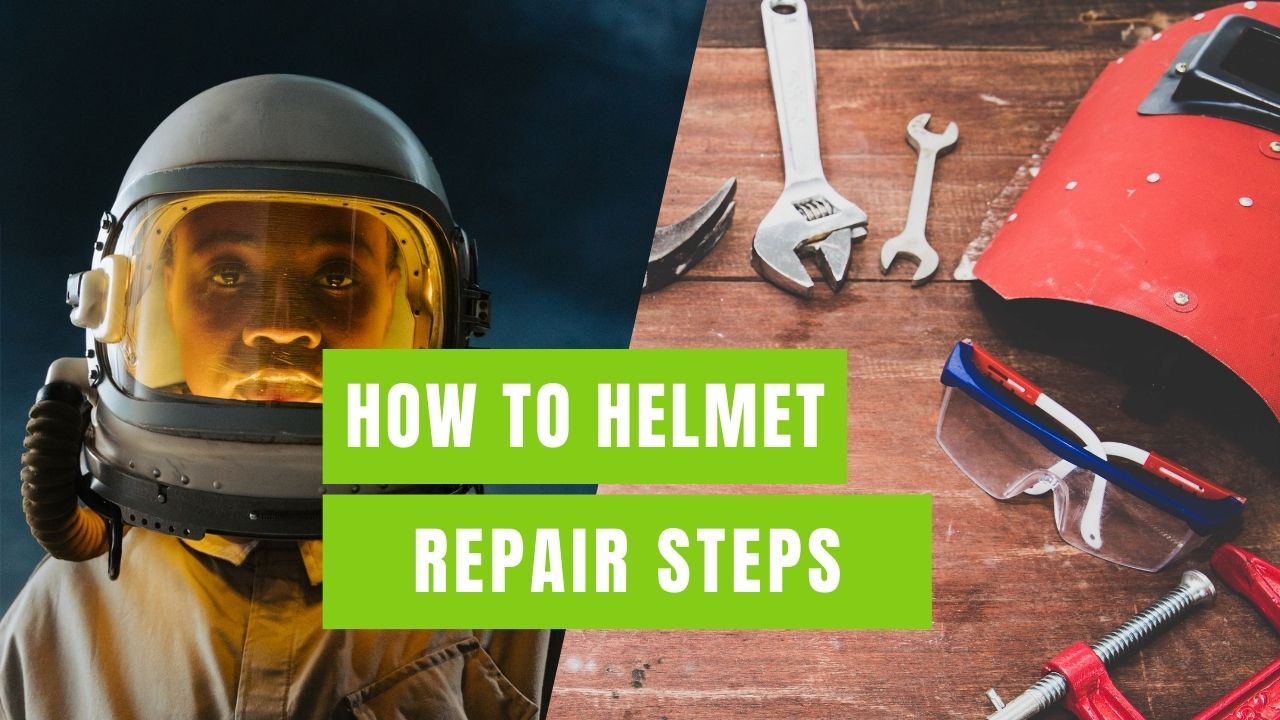Helmets are essential for safety, but over time, they can experience wear and tear. While some damage might require a replacement, minor repairs can often restore a helmet to good condition. This step-by-step guide will help you assess and repair minor helmet issues effectively.
1. Assess the Damage
Before starting any repairs, thoroughly inspect your helmet to determine the extent of the damage. Look for:
- Cracks in the Shell: Small cracks can sometimes be repaired, but extensive cracking usually means the helmet needs to be replaced.
- Loose or Damaged Padding: Internal padding that is worn out or detached can often be fixed or replaced.
- Straps and Buckles: Check for frayed straps, broken buckles, or damaged adjusters.
- Liner Condition: The EPS foam liner should be intact. Significant damage to the liner often requires a new helmet.
2. Gather Repair Materials
Depending on the type of damage, you may need the following materials:
- Epoxy or Super Glue: For small cracks in the shell.
- Replacement Padding: Available from the helmet manufacturer or online.
- Needle and Thread: For repairing straps.
- New Buckles or Adjusters: Available from helmet accessory suppliers.
- Velcro Strips: For reattaching loose padding.
- Sandpaper: For smoothing out rough edges after repairing cracks.
- Clean Cloth and Mild Soap: For cleaning the helmet before and after repairs.
3. Repairing Cracks in the Shell
If the shell has minor cracks, follow these steps:
- Clean the Area: Use a clean cloth and mild soap to remove dirt and debris from the cracked area. Let it dry completely.
- Apply Epoxy or Super Glue: Carefully apply epoxy or super glue to the crack. Follow the product instructions for application and drying times.
- Clamp or Hold Together: If possible, use clamps or hold the cracked area together until the glue sets.
- Sand the Surface: Once the glue is fully dry, use sandpaper to smooth out any rough edges around the repaired crack.
4. Replacing or Repairing Padding
If the internal padding is worn out or loose:
- Remove Old Padding: Carefully detach the old padding. If it’s glued in, gently peel it off.
- Clean the Helmet Interior: Wipe down the interior with a clean cloth and mild soap. Let it dry completely.
- Attach New Padding: Install the replacement padding according to the manufacturer’s instructions. Use Velcro strips if the padding isn’t adhesive-backed.
- Ensure Proper Fit: Make sure the new padding is secure and provides a comfortable fit.
5. Fixing Straps and Buckles
For damaged straps or buckles:
- Inspect the Straps: Identify any frayed or worn-out sections.
- Trim Frayed Ends: Use scissors to trim off frayed ends of the straps.
- Sewing Straps: For minor frays, use a needle and thread to reinforce the strap by sewing it.
- Replace Buckles or Adjusters: If buckles or adjusters are broken, remove the old ones and install new parts. Follow the manufacturer’s instructions or online tutorials for specific helmet models.
6. Regular Maintenance and Checks
After repairing your helmet, it’s essential to maintain it regularly:
- Clean Regularly: Clean your helmet and padding with mild soap and water. Avoid harsh chemicals.
- Inspect Frequently: Regularly check for new damage or wear. Address any issues promptly.
- Proper Storage: Store your helmet in a cool, dry place away from direct sunlight and extreme temperatures.
7. When to Replace Your Helmet
While minor repairs can extend the life of your helmet, certain conditions require a replacement:
- Major Cracks or Breaks: Significant damage to the shell or liner compromises the helmet’s integrity.
- Frequent Impacts: Helmets are designed to absorb a single significant impact. Replace your helmet if it has been involved in an accident.
- Age: Most helmets have a lifespan of 3-5 years. Over time, materials can degrade, reducing effectiveness.
Conclusion
Repairing a helmet can be a cost-effective way to maintain safety and comfort, but it’s crucial to know the limits of what can be fixed. By following this step-by-step guide, you can address minor issues and keep your helmet in good working condition. Always prioritize safety, and when in doubt, consult the manufacturer or consider replacing the helmet.
Regular maintenance and timely repairs will ensure that your helmet continues to provide the protection you need, allowing you to enjoy your activities with peace of mind.
Frequently Asked Questions (FAQ)
Q: Can I repair a helmet with major cracks? A: No, helmets with major cracks in the shell or significant damage to the EPS foam liner should be replaced immediately. These compromises the helmet’s ability to protect you in case of an accident.
Q: How often should I replace my helmet? A: Helmets should be replaced every 3-5 years, depending on usage and manufacturer recommendations. Replace your helmet sooner if it has been involved in a significant impact or shows signs of wear.
Q: Can I wash my helmet padding? A: Yes, most helmet paddings are removable and washable. Use mild soap and water to clean them, and let them air dry completely before reattaching.
Q: What should I do if the helmet straps are uncomfortable? A: Adjust the straps according to the manufacturer’s instructions to ensure a comfortable fit. If the discomfort persists, consider replacing the helmet with one that fits better.
Q: How do I know if my helmet fits correctly after repairs? A: After making repairs, wear the helmet and perform a fit check. It should sit level on your head, cover your forehead, and feel snug without being too tight
